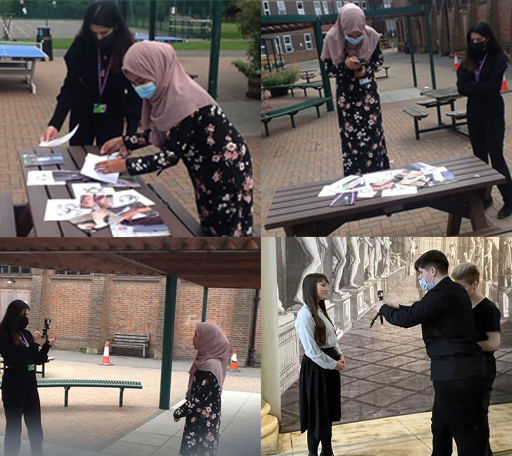1 Working together as a team
A real strength of the RETOPEA approach is that through the process of filmmaking, participants actively engage with issues related to religious toleration and peace in the past and present. This is not only due to the capacity that filmmaking can have in facilitating creative, multisensory engagement with these ideas — the fact that young people have to find ways of working together as a team to make a film helps to deepen and enhance the learning experience. So, the process of creating the film is just as important – if not more so – than the finished product.
IN PRACTICE: Familiarising your group with the filmmaking process
It is recommended that you give participants the opportunity to ‘warm up’ and familiarise themselves with being behind and in front of the camera. This can simply involve them taking turns in filming each other, briefly saying their name or talking about what they had for breakfast.
Alternatively, if you have a little more time, you could ask them to film each other responding to either or both of the following two questions:
- What does religious toleration mean to you?
- How can history help you think about religious diversity and toleration today?
Answering these two questions provides the opportunity for young people to experience what it is like to have to answer a complex question in a concise way in front of a camera.
This is not footage that needs to be included in the docutube (though it could be, should a group wish to). The main purpose of this activity is to help participants familiarise themselves with the filmmaking process and with the equipment, giving them the opportunity to check both video and sound. This activity can also help to establish what roles the different team members might like to focus on in the creation of the docutube in their small group. Some young people might find that they feel more comfortable behind the camera, others might prefer to speak to the camera as a presenter or actor.
There are good reasons for working in small groups of three or four, given that there are a number of different tasks and roles that need to be covered to make a film. A group of three people can, for example, involve one person being filmed speaking to the camera (either presenting, acting or interviewing), another filming and a third directing. If you have separate sound equipment (which is not required, but will provide you with better sound quality), handling this equipment can be another important role for a member of the film crew to take on. As far as possible, you should encourage members of each group to take turns with these different tasks.

IN PRACTICE: Deciding on roles in the group
To avoid any disagreements between different members of the group in the process of taking turns, it might be helpful for participants to draw lots or toss a coin. One group that worked particularly well together played ‘Rock, Paper, Scissors’ to decide whose turn it was for different tasks.
